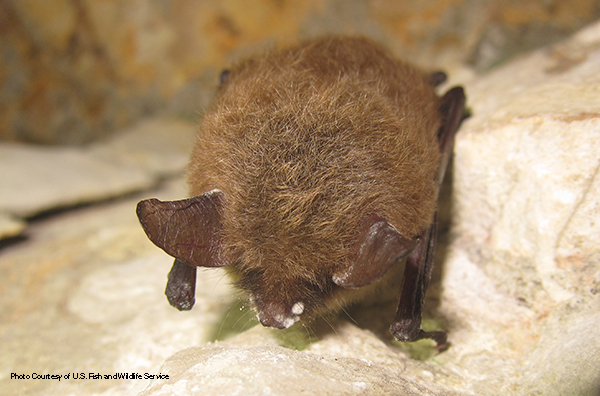Planning a Project? Threatened Northern Long-Eared Bat May Require Special Measures
 Engineers and scientists often need to take the environmental impacts of a project into consideration, especially as more species of animals and plants are added to the threatened species list. For the past nine years, for example, white-nose syndrome has been decimating bat populations along the East Coast and in the Midwest. The fast-moving fungal disease affects hibernating bats and is considered the worst wildlife disease outbreak in North America, having already killed nearly 7 million bats. (For more information on the disease, click here.)
Engineers and scientists often need to take the environmental impacts of a project into consideration, especially as more species of animals and plants are added to the threatened species list. For the past nine years, for example, white-nose syndrome has been decimating bat populations along the East Coast and in the Midwest. The fast-moving fungal disease affects hibernating bats and is considered the worst wildlife disease outbreak in North America, having already killed nearly 7 million bats. (For more information on the disease, click here.)
Even if you’re not a fan of bats, you probably appreciate their eating habits. Aside from taking millions of mosquitoes out of circulation and away from your blood (the loss of 1 million bats is estimated to result in between 660 and 1,320 metric tons of insects no longer being eaten), bats are nature’s pest control specialists. Various studies have estimated their economic benefits to the agricultural industry are in the billions of dollars, thanks to their nightly feasts on crop-eating insects.
Recently the hard-hit northern long-eared bat was added to the list of federally threatened species, which means that within a designated buffer zone it must be protected from activities that could harm or kill it. The primary threat to these bats is white-nose syndrome (the photo above, courtesy of the U.S. Fish and Wildlife Service, shows an affected northern long-eared bat). Due to the precipitous drop in their population, activities that were not significant before – such as logging, wind energy development, or residential development – now have the potential to have a more serious impact.
The likelihood of a project being affected by the presence of a threatened species is highly dependent on the scope and location of that project. A pipeline being constructed through a wooded area in northern Wisconsin is more likely to be affected than a redevelopment project in a city like Madison. The buffer zone for the long-eared bat covers much of the eastern half of the United States. You can view it here.
Environmental impact statements (EIS) take into account many factors of a potential project – socioeconomic impact, jobs created, traffic impacts, nearby contaminated sites, just to name a few. Protected species are definitely part of what gets evaluated, and state Departments of Natural Resources are the best source of information on what species need to be accounted for.
In the case of the northern long-eared bat, a special interim rule carves out a few exemptions that allow for limited activities. Note that if the U.S. Fish and Wildlife Service (FWS) has documented either roost trees or hibernacula nearby, certain conservation measures must be followed to qualify for the exemption. Exemption qualifications include:
Wind: Wind energy projects do not automatically qualify for the exemption if they are within the buffer zone. If potentially suitable habitats are nearby, you will need to consult with the FWS on the effects on the bat from turbine placement, construction, and operations.
Surveys, utilities, and transportation: Maintaining existing rights-of-way and transmission corridors is covered under the exemption, as is expansion of a right-of-way or corridor up to 100 feet.
Forestry: Generally, forestry practices can continue if conservation measures are met. Due diligence is required to qualify for the exemption, including determining if the affected stand is within a quarter-mile of a hibernaculum. Contact your state Natural Heritage Inventory Program for this information. Avoid timber harvest during June and July, the bats’ pup-rearing season.
Residential: If less than a cumulative acre of trees (measured by canopy coverage) will be cleared, you are covered under the exemption. You are also covered if you need to remove a hazardous tree regardless of whether roost trees or hibernacula are documented nearby.
For a more in-depth look at whether you’ll qualify for the exemption, or if you’ll need to apply for a permit, visit the FWS website.

Post a comment: